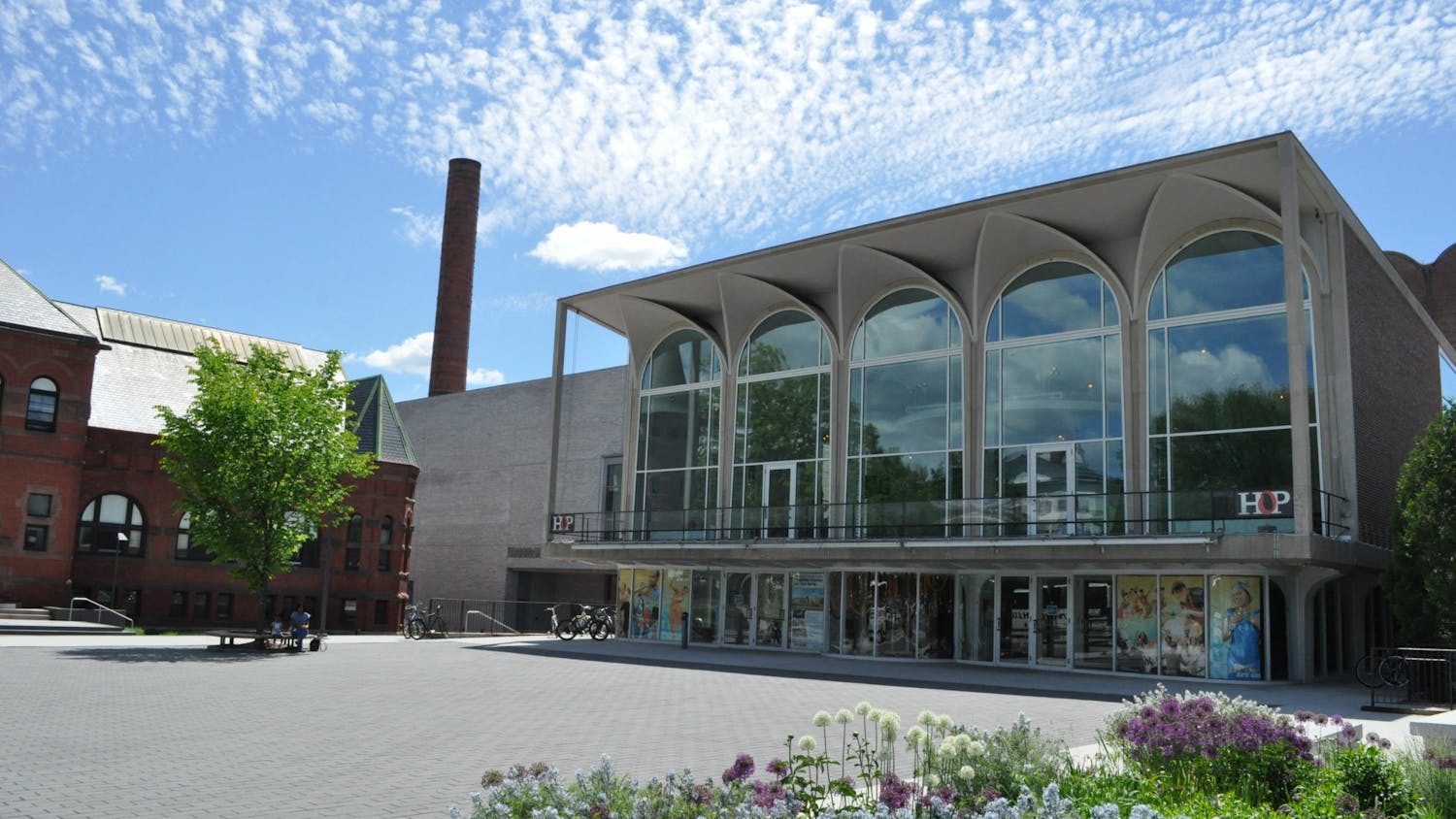From working for a Tennessee-based artist to producing videos in the Pittsburgh Film Office, Dartmouth students explore a wide range of internships in the arts. For some, though, their professional experience takes place right on campus — through the Hood of Museum of Art’s internship program.
Launched in 2001, the Hood’s internship program places 12 students in six departments: campus engagement, coin — managing the museum’s coin collection — curatorial, Native American art, programming and registration, according to the museum’s website. During their year-long placement, the students collaborate with curators, help with exhibition development, promote student engagement and document the pieces in the Hood’s extensive collection, among other tasks, academic programming curator Amelia Kahl said.
Students who are interested in interning at the Hood apply the spring before their desired start term, according to Kahl. She said the application process, which includes interviews and writing samples, is extensive.
“It’s a pretty elaborate process, and that is important for us to really get to know the students, but also to give students real experience in the application process, because applying for jobs is something that you don’t really get good at unless you do it a lot,” Kahl said.
Students can apply to multiple positions, submitting one general application and then interviewing separately for each department.
All interns, no matter what department they are placed into, have the opportunity to work alongside Hood staff members in different departments, such as curation and safety and security, Kahl said.
“All of the work, whether it’s forward-facing or behind-the-scenes, is real museum work that gives students that experience … with a level of support to help them learn and grow,” she explained.
Hood Foundation education curator Neely McNulty has been an intern supervisor for seven years and is supervising two programming interns this academic year. McNulty guides her interns as they learn how to initiate, develop and run programs such as museum tours.
“It’s a privilege to get to know someone very well over the course of a year and spend time learning about their interests and helping them take those interests and shape those interests a little bit, either in the form of a curated exhibition, or shape those interests in the form of successful programs,” McNulty said.
Erik Siegel ’26, a programming intern, said they appreciate the unique ability to work alongside Hood staff members during the internship.
“[The staff] are very, very passionate in what they do, and they have a certain expertise that I don’t otherwise see on campus, like gallery experience [and] exhibition experience,” Siegel said.
According to Kahl, many interns are also given the opportunity to choose their projects based on specific interests.
Siegel said the projects he has worked on — such as beginning his own “Space for Dialogue” exhibition on “suburbia” — has changed his perspective on time management, as projects usually span the entire year.
“One project might span a full year, if not longer, in terms of planning and execution,” he said. “From my perspective, because everything is so condensed in an academic term, [work at the Hood] feels so prolonged.”
An important project for many interns is the “A Space for Dialogue” exhibit — which happens multiple times each year and allows interns to have full curatorial control of an exhibit of their choosing. The three curatorial interns, the campus engagement intern and the programming interns are all eligible to complete a “Space for Dialogue” exhibit if interested.
These interns are able to reflect on their personal experiences or interests to research, design and eventually present on their chosen exhibit. Madyson Buchalski ’24, for example, recently completed “Sports Culture: Gender, Belonging and Nationhood,” which explored “how identity is constructed and communicated through sports,” according to the Hood’s website.
“Students who are really rooting their curatorial work in their life experience and values — they are able to do something that really resonates for them, and so that’s very exciting to watch,” Kahl said.
The Hood’s internships are suitable for a wide variety of students, according to McNulty. Different Hood departments require different skill sets, so the Hood welcomes a wide range of perspectives, she said.
“Some of the greatest intern experiences we’ve had have been … neurology students or geography students [or] statistics students,” McNulty said.




